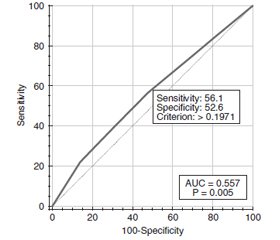Журнал «Медицина неотложных состояний» Том 19, №3, 2023
Вернуться к номеру
Значення кількості поранених анатомічних ділянок тіла й операцій у хронізації болю в пацієнтів із вогнепальними і мінно-вибуховими пораненнями
Авторы: V.R. Horoshko
National Military Medical Clinical Center “Main Military Clinical Hospital”, Kyiv, Ukraine
Bogomolets National Medical University, Kyiv, Ukraine
Рубрики: Медицина неотложных состояний
Разделы: Клинические исследования
Версия для печати
У пацієнтів із пораненнями результат лікування болю на різних етапах має важливе значення, адже в осіб із мінно-вибуховими травмами хронічний біль діагностується у 83,3 %, а з вогнепальними — у 70 % випадків. У цивільному житті хронічний біль у схожої категорії пацієнтів зустрічається в 11–40 % випадків. Причини такої високої частоти хронізації недостатньо вивчені. Отже, дослідження впливу кількості поранених анатомічних ділянок тіла й операцій на результати лікування болю буде відігравати важливу роль та сприяти покращенню останніх у цієї категорії пацієнтів. Одним із факторів, що може впливати на хронізацію болю, є кількість поранених анатомічних ділянок тіла й операцій.
The outcome of pain treatment in patients with wounds at different stages of management is important, because chronic pain is diagnosed in 83.3 % of victims with blast injuries, and in 70 % of people with gunshot wounds. In civilian life, chronic pain occurs in 11–40 % of cases in a similar category of patients. The reasons for such a high frequency of chronicity have not been sufficiently studied. Thus, the study on the influence of the number of injured anatomical parts of the body on the results of pain treatment will play an important role and contribute to improving the latter in this category of patients. One of the factors that can influence pain chronicity is the number of injured anatomical parts of the body.
хронічний біль; лікування болю; етапи лікування; вогнепальні поранення; мінно-вибухові травми
chronic pain; pain treatment; stages of treatment; gunshot wounds; blast injuries
Для ознакомления с полным содержанием статьи необходимо оформить подписку на журнал.
- Frescos N. What causes wound pain? J. Foot Ankle Res. 2011 May 20. 4 (Suppl. 1). P22. doi: 10.1186/1757-1146-4-S1-P22.
- Kuchyn Iu.L., Horoshko V.R. Predictors of treatment failure among patients with gunshot wounds and post-traumatic stress disorder. BMC Anesthesiol. 2021. 21. 263. doi: 10.1186/s12871-021-01482-8.
- Kuchyn Iu.L., Horoshko V.R. Pain syndrome in patients with gunshot wounds of the limbs and post-traumatic stress disorders. Emergency Medicine. 2021. 17(7). 24-31. doi: 10.22141/2224-0586.17.7.2021.244591.
- Beecher H.K. Pain in Men Wounded in Battle. Ann. Surg. 1946 Jan. 123(1). 96-105.
- Beecher H.K. Relationship of significance of wound to pain experienced. JAMA. 1956. 161(17). 1609-1613. doi: 10.1001/jama.1956.02970170005002.
- Tegegne B.A., Lema G.F., Fentie D.Y., Bizuneh Y.B. Severity of Wound-Related Pain and Associated Factors Among Patients Who Underwent Wound Management at Teaching and Referral Hospital, Northwest Ethiopia. J. Pain Res. 2020. 13. 2543-2551. doi: 10.2147/JPR.S276449.

